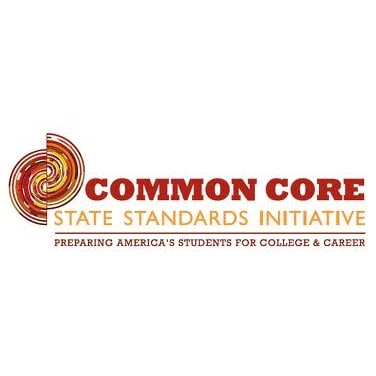Why We Need Common Standards and Better Tests

It’s testing season–and it’s easy to criticize state tests these days. Tests take a lot of time near the end of the year and the results don’t come back very quickly. Grade level tests aren’t always a good indication of what students were taught or what they know and can do.
However, those tests represent an important commitment to equity–and that starts with measurement and transparency. New shared learning expectations call the Common Core State Standards have been voluntarily adopted by 45 states. New tests are being developed that these college- and career-ready expectations. Both are a big step forward.
But let’s back up and recall why we do all this testing.
How we got here. Thirty years ago a report called A Nation At Risk rang an achievement alarm bell. Its recommendations, coming out of the Reagan Administration, included, “Standardized tests of achievement should be administered at major transition points from one level of schooling to another and particularly from high school to college or work,” the report stated, adding that they should be “part of a nationwide (but not Federal) system.”
Under President Clinton, federal policy required states to set standards and conduct assessments, but states were granted waivers to allow time to for thoughtful implementation. By 2000, only 11 states had fully approved standards and assessment plans in place. Only 18 states required students to take a basic competency or skills test or exit exam—just seven more than in 1983. Some states took steps to improve teaching by raising preparation requirements. A few states had strong accountability systems that identified failing schools and supported their improvement–most did not.
The bottom line is that it was clear at the turn of the century that two thirds of American kids were not getting what they deserved from our schools–and that had to change.
Good school promise. In 2001, President Bush proposed a reauthorization of federal education policy called No Child Left Behind (NCLB). It was coauthored by Representatives John Boehner (R-OH), George Miller (D-CA), and Senators Edward Kennedy (D-MA) and Judd Gregg (R-NH). NCLB required every state to adopt college-ready expectations. It also included a framework for school accountability–an effort to enact a ‘good school promise.’ The progressive framework took steps to improve schools, tutor students needing assistance, and facilitate other options.
I supported NCLB’s bipartisan high expectations and efforts to address chronic failure–a major victory for equitable education in the U.S. A decision was made to focus on grade level (criterion-referenced) tests rather than measures of growth. In retrospect that was a mistake–it’s now important that we quickly improve the ability to measure academic growth of individual students.
It turns out there were other problems with the NCLB framework and if adjustments had been made every two years, we’d be in pretty good shape now. Instead congress has kicked the can down the road for a decade and the law is badly in need of repair and is out of favor with both sides of the aisle.
Common Core. For more than 20 years, state leaders like Governor Jim Hunt have advocated for common college and career ready standards. One reason was an unintended incentives in NCLB to lower expectations–states made tests easier so more kids would pass. (A 2009 study showed that two thirds of states had lower standards). There was also an opportunity to improve standards by making them better–fewer, clearer learning targets that better reflected expectations of colleges and employers.Hunt and the state education chiefs commissioned an effort to write new expectations in reading, writing, and mathematics. By 2012, 46 states had adopted the Common Core State Standards.
Another important benefit for states holding common learning expectations is the ability to create and share learning materials, tools and tests (more on that tomorrow).
Better tests. Without much else to go on, we spent the last 15 years using old fashion end-of-year multiple choice tests (called summative assessment) to do many jobs–improve learning, teacher evaluation, student matriculation, and school accountability.
These end of year state assessments identified some schools, for federal purposes, as ‘needing improvement.’ They are often referred to as “high stakes tests” by critics but how states use their tests is up to them–they are important but seldom “high stakes” for students.
As part of the stimulus plan of 2009, the federal government invested $360 million in four consortia that proposed to build a new generation of tests. The two main groups–Smarter Balanced Assessment Consortium and The Partnership for Assessment of Readiness for College and Careers (PARCC). Forty-six states have joined these consortia and plan to implement their online tests at the end of the 2014-15 school year.
These tests, being piloted now in thousands of schools, mark a step function improvement. They include more writing, are better measures of critical thinking, will provide rapid results, and (for most states) will be cheaper. Large scale testing always lags the most innovative assessment practices, but we know these tests will be better than the ones we have and it’s likely that they’ll improve substantially in future iterations.
In the near future. We’re in the early stages of the historic shift from a time- and print-based system to student-centered digital-learning. Powerful adaptive learning systems have been developed that quickly diagnose learning levels and target instruction. Learning games, simulations, and most digital curriculum includes embedded assessments. Schools are beginning to ask students to demonstrate their learning before moving to the next level rather than shuffling along without meeting expectation. Millions of students already benefit from smart schools with lots of data to guide improvements in teaching and learning and to mark their progress from level to level.
In the mean time. A couple states have left the testing consortia over a variety of concerns about the new tests but that’s not a bad thing. If a handful of states work directly with vendors on new tests, it will only improve the assessment marketplace. It could result in more innovative policies and tests.
In some states there is talk about leaving Common Core. States already have some opportunity to tailor and add to the Core. By leaving the Core, they will lose comparability with other states and they’ll go back to requiring customized curriculum, tests and tools. They will lose the ability to share information and resources with other states–in other words, they will be making a big mistake.
Last week there was a call for a moratorium on consequences. The experience of the 1990s suggests this isn’t a good plan. Rather than this blanket delay, states should build a thoughtful plan to 1) phasing in Common Core expectations, 2) supporting teacher professional development, 3) improve access to digital learning and consider, and 4) using current and future test information.
Common Core–now more than ever. The Common Core is a state-based initiative that has produced better, higher, and clearer expectations for students. The new standards have unleashed new investment and innovation. The first round new tests associated with these standards–starting in 2015–are better and cheaper and produce rapid feedback. A couple years after that, the whole system will be better informed by data that is built right into student learning experiences.
It’s easy to criticize tests but they represent this country’s commitment to improving the system for all students–particularly the least well served students. The Common Core is a big step forward and so are the tests that come with it.
This post first ran on Huffington Post








0 Comments
Leave a Comment
Your email address will not be published. All fields are required.